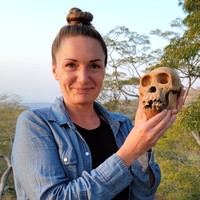The 87th Annual Meeting of the American Association of Physical Anthropologists, Austin, TX, Apr 17, 2018
It is my great pleasure to welcome you to the 2018 meeting of the American Association of Physica... more It is my great pleasure to welcome you to the 2018 meeting of the American Association of Physical Anthropologists. This year's meeting is our 87th, and will be held in Austin, Texas. The main conference hotel, the Hyatt Regency Austin, is located on the shores of the Colorado River and is in a perfect location just across the bridge from downtown Austin. Our programming officially begins on Wednesday, April 11th, with the Committee on Diversity Undergraduate Research Symposium (open to everyone from 6:00-8:00 pm) and the Opening Reception (8:00-11:00 pm). This year we will kick off the main scientific program on Wednesday evening with an invited poster symposium (IDEAS Alumni Symposium: Creating and Supporting Diverse Communities within the AAPA, organized by Felicia Gomez, Ripan Malhi, Agustín Fuentes, and Susan Antón) and a contributed poster session (Education in Anthropology, chaired by Elizabeth Evangelou and Tessa Somogyi), which describes recent research on best practices in classroom and museum teaching. These poster sessions run from 8:00-11:00 pm, just down the hall from the Opening Reception. All Wednesday events take place at our second conference hotel, Downtown Austin's JW Marriott. from 7:00-8:00 am and noon-1 pm; given the early start we will have breakfast available) followed by a poster switchover from 1:00-1:30 pm. The afternoon session begins at 1:30 pm (with authors present from 1:30-2:30 pm) and an end time of 7:00 pm on Thursday, 6:30 pm on Friday, and 6:00 pm on Saturday in order to accommodate the Auction, Business Meeting, and Closing Reception, respectively (see details below). Poster authors are present for the last hour of the afternoon contributed poster sessions (6:00-7:00 pm on Thursday, 5:30-6:30 pm on Friday, and 5:00-6:00 pm on Saturday). The late start (2:30 pm) of podium presentations and invited poster symposia allows dedicated time for viewing of posters as well as an assortment of lunchtime events and workshops. Given the complexity of our meetings, we are fortunate to again have an AAPA Meetings App, developed by Ed Hagen, to help us track times and locations! The app is available for both Android and Apple.

Uploads
Papers by Vicky M. Oelze